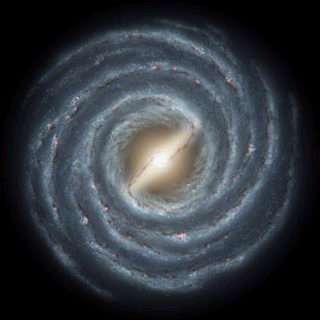Research reveals star forming activity

Where do elements, such as iron in our blood or calcium in our bones, come from? Astronomers say they come from thermonuclear reactions in hundreds of millions of stars that burn at high temperatures in our galaxy. Stars that are 10 or more times more massive than the sun eventually explode as supernovas, leaving traces of elements in the space between the stars of the Milky Way. When our solar system was created, astronomers say the trace elements were drawn from interstellar gases to form the Earth.
"Life depends on stars creating elements we so desperately need," says Clemson University astrophysicist Dieter Hartmann. "It's these elements that support life here on Earth and probably elsewhere."
In studies, published in Nature and presented this week at the meeting of the American Astronomical Society in Washington, Hartmann and his collaborators outline that supernova explosions also send out an element known as Aluminum-26 (26Al). It creates a glow that resembles the starlight from the uncounted number of stars deep inside the Milky Way, but it really is the emissions from Aluminum-26 produced and ejected by many dying, massive stars. As the aluminum rapidly decays in space, it produces energy in the form of gamma ray photons, which are a few thousand times as energetic as a medical x-ray here on Earth. Hartmann says the entire Milky Way galaxy glows in this type of light. With this information, says Hartmann, scientists can better estimate how often supernovas explode (about two every century), how many stars form a year (about half a dozen), and how much Aluminum-26 is in the interstellar space (about three solar masses). The discovery proves, he says, that the enrichment process is continuing to seed the galaxy with needed elements.
"This observation of Aluminum-26 creates an instant snapshot of the galaxy for us," says Hartmann. "It has drawn us an accurate picture that we haven't had before, confirming how Aluminum-26 rotates with the galaxy as a whole. It also helps us answer the question of how many stars have formed in the Milky Way over the past few million years in our galactic life."
Hartmann adds that advanced technology –– digital cameras, medical imaging and nuclear radiation detectors –– is often derived from research findings such as this.
The discovery is part of a multi-decade German, French and American collaboration that studied meteorites and measurements from European and United States satellite experiments. NASA funded the U.S. portion of the study.
Source: Clemson University

















